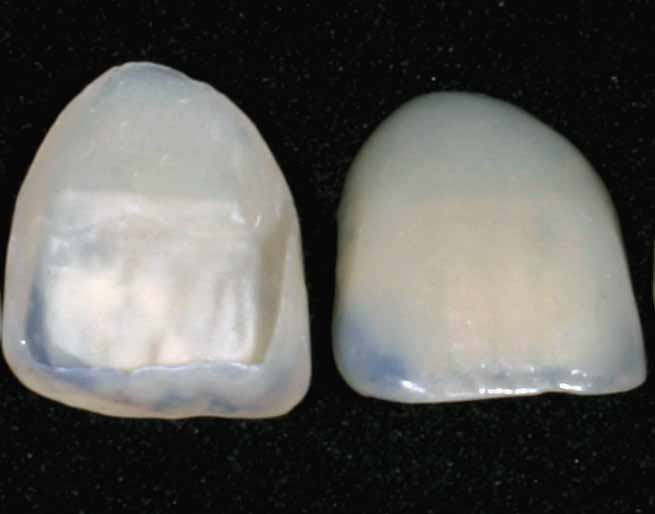
If you've chipped a tooth, then along with structural corrections, you may want cosmetic corrections as well--especially for teeth that are seen when you smile. The question is, do you need fillings, bonding, or veneers? This can depend on a number of factors. If nerves have been damaged, you may need an extraction or endodontic treatment (e.g. root canal) and a filling. If you have multiple teeth that have been chipped, you may want to consider veneers. But for just a single tiny chip, then bonding is the way to go since it is inexpensive and only takes one visit.
As you can see, the descriptor "chipped tooth" can describe a number of ailments. A post at The Daily Grind goes into more detail as to why a "chipped tooth" can produce many different restorative options:
Deciphering the Meaning of ‘I Chipped a Tooth’
I know this is something you hear all the time: “I chipped a tooth.” This can mean so many things, especially if it is coming from a nondentist.
“I chipped a tooth” in the posterior can be a chip off the marginal ridge next to a class II restoration that you did five years ago. And if you saw this, you might just say, “It is fine,” or you might just smooth it off. Or a broken tooth in the posterior could mean the ling cusp of tooth No. 12 just broke to the gumline and below.
The question that usually comes up at our office is: How do we schedule patients who call and say, “I chipped a tooth.”
I am a doctor who does not like to schedule a “come in and we will see” visit. I know how difficult it can be for people to take time off of work or get a babysitter just so I can tell them, “Yep, you have a chipped tooth, and we can see you in three weeks to take care of this.”
Sometimes I schedule 50 minutes for a chip on the anterior that you couldn’t see with a microscope, or I might schedule 20 minutes for a “chip” when, actually, a child fell off his bike and “chipped” the heck out of teeth Nos. 8 and 9, to the point where the nerves were hanging out.
Because I refuse to do a “look-and-see” appointment, about a year ago, we bought a smartphone for the office. First, we bought it to be able to send text messages to people to confirm their appointments. We all know that calling someone at home and leaving a message on their voicemail is about as effective as sending a smoke signal (but we tried for 10 years). And nearly everyone has a smartphone these days, and everyone sends text messages (except for Grandma Nel, who we still just call). Now that we have this designated smartphone, we just ask people to send us a photo of the tooth via text message
As you can see, if patients do chip their teeth, they should be concerned about setting up the right appointment first before settling on veneers, bonding, etc. If there is a dental emergency and severe trauma, saving the tooth's integrity is paramount and you need to call your dentist right away. Because some enamel injuries are difficult to spot, your dentist may send you to another specialist first. One study showed that some specialists may have better imaging equipment that could help identify chips:
Which imaging system is better for diagnosing tooth cracks?
When it comes to examining images of a tooth and identifying a crack, should you use periapical radiography or cone-beam CT (CBCT)? Also, who is better trained to identify these cracks on images, an endodontist or a radiologist?
Researchers from China noted that cracks in teeth present practitioners with a challenge in designing a treatment plan. Using both periapical radiography (PR) and CBCT, they investigated the best imaging method to identify these cracks while also comparing the performance of different practitioners (PLOS One, January 4, 2017).
"In clinical practice, it is a huge challenge for endodontists to know the depth of a crack in a cracked tooth," the authors wrote . . .Early enamel cracks have no obvious symptoms and may not be visible on examination. Yet they can lead to patients coming to your office because of pulpitis, periapical periodontitis, or even root fracture. As creating an appropriate treatment plan and assessing the long-term prognosis for these teeth can be difficult, there's a need to understand the best way to diagnose this condition . . .
"Within the limitations of this study, on an artificial simulation model of cracked teeth for early diagnosis, we recommend that it would be better for a cracked tooth to be diagnosed by a radiologist with CBCT than PR," the authors concluded.
Once the severity of the tooth chip has been identified and the structural integrity checked out, and once you've visited any specialists (e.g. radiologists), then you can start looking at bonding, veneers, and the like. Take a look at dentaloasisofoc.com/cosmetic-dentistry/veneers/ for more information.
The following article Veneers, Fillings, or Bondings? Depends on Your Chipped Tooth was originally published on: http://www.dentaloasisofoc.com
Dental Oasis Of Orange County
7777 Edinger Ave #232
Huntington Beach, CA 92647
(714) 894-7700
drtoorani@dentaloasisofoc.com
Google My Business Listing
Google Map
Directions to our office
Yelp Page
No comments:
Post a Comment